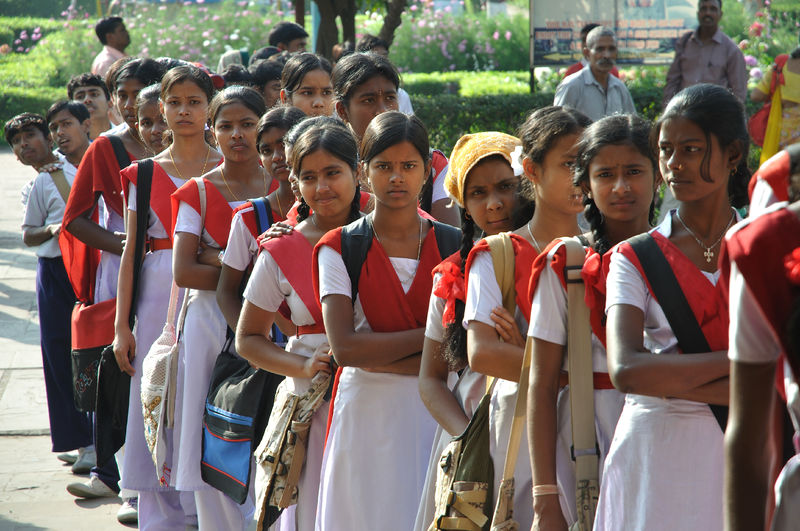India has always been a pluralist country, with rich diversity, reflected in the multitude of racial identities, cultures, religions, and languages that makes its social fabric highly stratified. Despite this abundant social diversity, agriculture has remained the predominant occupation for three-quarters of India’s inhabitants, with almost 80 percent of its population living in rural areas and the Scheduled Castes and Scheduled Tribes comprising about 16.6 and 8.6 per cent respectively of India’s population.
However, the national intelligentsia that has been responsible for developing policies since the inception of the freedom struggle in the country has only consisted of the middle and urban classes of India. Thus, they have more in common with the colonial authorities they fought against than with the deprived communities they spoke for since both sections were equally oblivious to the intricacies of the daily realities of the rural people. They justified their position as leaders by appearing superior to the rest of society because they communicated in English, ironically considered a sufficient instrument for judging individual status. As a literate voice for the rural masses, they translated village tradition into the English language of modernity and incorporated the history of the national land and its people into a unitary chronicle of the Indian nation. By promulgating modern ideas about religious communities, racial identities, linguistic identities, and political progress, the national leaders made the foreign character of the colonial authorities the central aspect responsible for the social, political, and economic disruption in India.

The British were accused of introducing money lending practices, tax demands, and capitalism that caused the social exclusion of particular groups within India. However, hierarchical social structures based on inequality and exploitation have been an integral aspect of social relations in rural India because of ancient caste formations, old traditional customs, social habits, and modes of thinking for centuries. Thus, social stratification persisted in India long before the arrival of the Britishers, but nationalists benefited from blaming the colonial authorities for the issues that India faced. Acknowledging the corrupt power dynamics in India would threaten their positions of authority as landowners, merchants, or traders. Consequently, to suppress the subaltern voice, rural communities were merely depicted as reacting to the activities of the state or rebelling against the control imposed by state institutions, so they were not considered capable of producing social change.
Since the nationalists regarded the daily practices of indigenous communities as irrelevant, they considered poverty and unemployment as the most significant issues that required attention. Instead of creating policies that were sui generis, nationalists believed that economic growth was only possible by adopting the British model for development that promoted modernisation and industrialisation. The drawback with such a development model is visible with the failure of the country’s primary aim of providing basic education to every section of the population. After independence, education policies began to propagate the notion of a homogenised education system across India as an agent to achieve industrial prosperity and eventually contribute to accelerating economic growth. However, like all other policies, education continued to ignore factors such as equity, social justice, and inclusivity.
This dominating narrative of the elites in education has sustained itself over the years, as is visible with the launch of the National Education Policy (NEP) 2020. It aims to provide world-class education to all Indian citizens so that the education system can become the hub of the next industrial revolution but the educational goals set out by NEP only cater to the privileged sections that have had access to education over generations. It considers the current structures of higher education in the country as inefficient and instantly negates the socio-cultural diversity, decentralised autonomy, and the reach and scope of prevailing colleges. The possibility of the production and implementation of knowledge at different levels is completely ignored.

Alternatively, the policy favours the establishment of large multidisciplinary universities. These Higher Education Institutions (HEI), demand vast amounts of resources in terms of land, infrastructure, and other basic amenities, yet no details have been given about the implementation and fundings of such HEIs. Hence, the proposal of having at least one HEI in every district is not feasible under the current education system followed by states. It is evident that only large-scale investors can establish such large multidisciplinary institutions that would cause increasing privatisation in the education sector and restrict its reach to all sections of society. Colleges that will not meet the standards set by the NEP would be closed down, which is equivalent to the denial of opportunities for rural and semi-urban populations.
The biggest example of the homogenisation present in NEP 2020 lies in the merging of most of the deprived and disadvantaged sections of society with distinct needs into a single category termed the Socio-Economically Disadvantaged Groups (SEDGs). This broad categorisation will include gender identities, socio-cultural identities, geographical identities, and individuals with disabilities that would then consist of 80 per cent of the population. In doing so, the policy effectively conceals the idea that these are distinct Constitutionally-mandated categories and proposes establishing a segregated national school and teacher educational system for this Group. If this segregated education system is implemented with poor teaching-learning facilities and poor quality teachers, it could cause a massive retrogression in Indian education.
Therefore, NEP 2020, like many policies introduced in the country in its history post-independence, have been developed by individuals with a relatively oversimplified understanding of the ground realities in India. Such development policies fail to provide a coherent perspective of the mechanisms required for providing equitable social, political and economic opportunities. They will continue to be unsuccessful unless the minorities are regarded as actual entities worthy of being heard.
As a student of sociology, Nanao has realised that the subject exists everywhere. Now she is on a journey to examine political, cultural, historical, and economic realities through a sociological lens. This voyage has led her to Itisaras. She enjoys studying mythological texts and literature to present alternative opinions to popular narratives. Her love for history has also developed into an interest in exploring monuments around her.


Excellent website. A lot of helpful information here. I?¦m sending it to several buddies ans additionally sharing in delicious. And certainly, thank you for your effort!
I really enjoy reading on this site, it contains good blog posts. “I have a new philosophy. I’m only going to dread one day at a time.” by Charles M. Schulz.
Hello my loved one! I want to say that this article is awesome, great written and include almost all significant infos. I’d like to peer more posts like this .
Your place is valueble for me. Thanks!…
As a Newbie, I am continuously browsing online for articles that can help me. Thank you
That is very fascinating, You’re an overly professional blogger. I’ve joined your feed and look ahead to in search of extra of your great post. Also, I’ve shared your web site in my social networks!